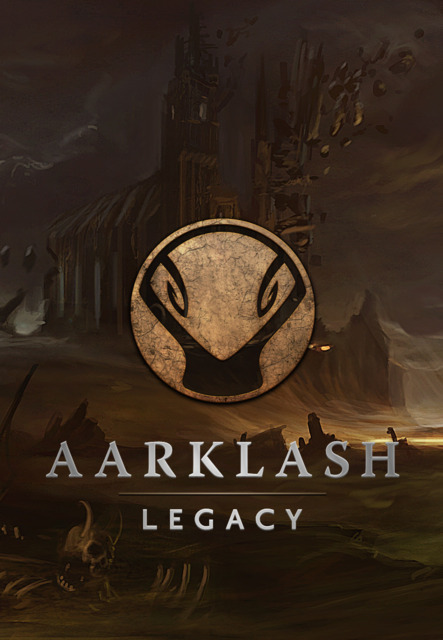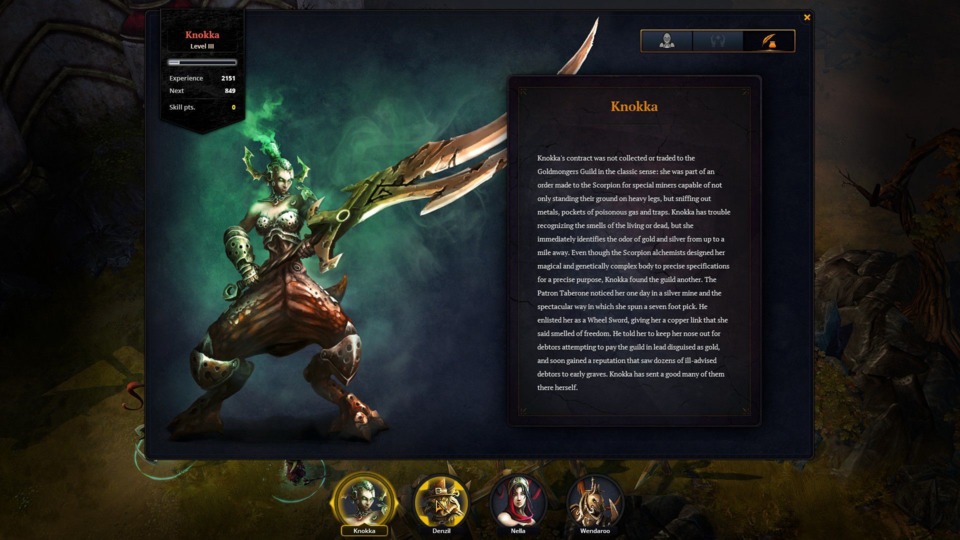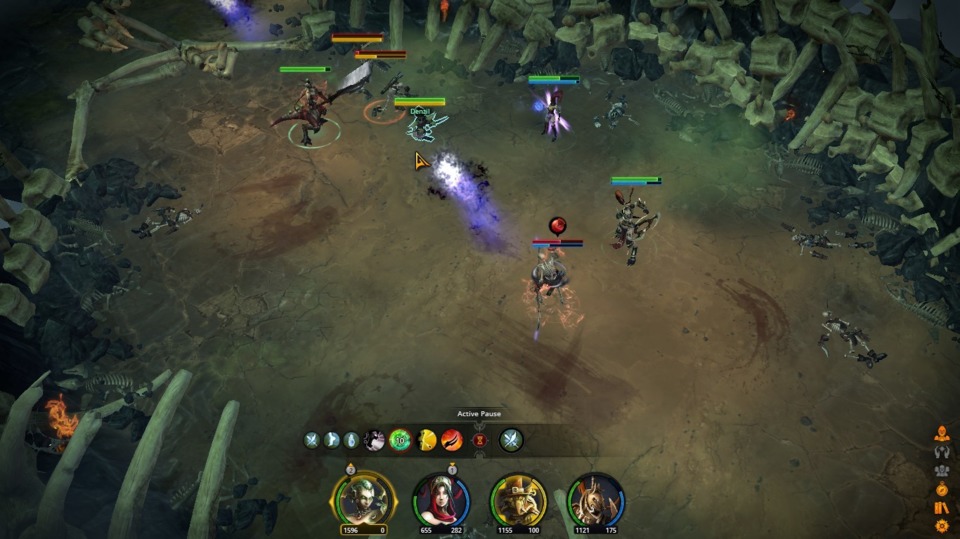Indie Game of the Week 92: Aarklash: Legacy
By Mento 0 Comments

As has become a familiar refrain for this feature: I had no idea what I was expecting after booting up Cyanide Studio's Aarklash: Legacy for the first time, but it wasn't this. Cyanide has a somewhat sketchy reputation for their CRPGs; playing their game of Game of Thrones didn't appeal, nor have I felt an inclination to pick up Styx. Likewise, when I swept up Aarklash: Legacy for a quid and change two years back I thought for the longest time that it was a Dungeon Siege knock-off loot RPG based on its screenshots. It's actually closer to a Baldur's Gate/Infinity Engine game if you greatly minimized or even excised a lot of the traditional aspects of a CRPG - story, side-quests, loot/treasure, dialogue, any sort of vendor economy - and focused entirely on its real-time (with tactical pausing!) combat.
Fortunately, that focus on the combat paid off. It not only smartly designs its small party of pre-determined characters and their various skill trees to be complementary, but it also does what Zeboyd and Mistwalker's The Last Story and a precious few other RPGs do where there are a (mostly) finite number of encounters which are all very carefully considered for game balance and the current level of character progression. That is, each battle has been designed in such a way to offer you a serious challenge at the point of the game you're at, even taking into account the ways you might be developing your characters and the gear you've found, and they find multiple ways to toss assortments of enemies at you in different configurations: say, a battle against a few tank enemies that eventually introduces a few ranged reinforcements in the opposite direction after a minute or so. It's all killer and no filler, in so many words; a RPG that truly respects your time, even if it ends up being a little light on the more immersive elements of the genre.
The player controls a "quorr" of the secretive Goldmongers Guild of the world of Aarklash: essentially a team of hard-ass debt collectors and bailiffs comprised of warriors and mages of various fantasy races that were sold into slavery at a young age to pay off their family's debts, their participation in these tasks bringing them closer to full emancipation (earning their "gold link", similar to a gladiator). Your group was ambushed in the middle of a run-of-the-mill "confiscation of goods" job and informed that the local kingdoms have banded together to eliminate the Goldmongers and their 24-karat grip on the world's economy. That means it's open season for all quorrs, including your own. The story takes your group and a handful of other Goldmonger survivors across mountains and wastelands and haunted forests to a safehouse "hold" where the remaining Goldmongers are to meet up and take stock of their options. The game's progression largely consists of a linear course of areas full of enemy encounters and the occasional dead end for a chest or an optional battle (which are almost as valuable, given how much any XP edge could help), with your characters piping up every so often to deliver story exposition, explain pertinent lore background about the local area, or discuss their next move. It's not voice acted too well and the script/subtitles are rife with typos, but Cyanide is a foreign language Indie studio so I'm not going to rag on them too hard for that.

The meat of the game's progression is in its skill trees. Each character has four distinct abilities that might require difference resources - mages use MP, tanks use their own health - and often have cooldowns on top of that. All four can be upgraded multiple times, and the player can opt to maximize one branch or spread across several, depending on their playstyle. I personally went for the min-max route so I could always have a nuke button to rely on, but those looking for a bit more versatility could do well focusing on the two or three abilities they use most often. Each ability also splits at a certain point of their progression chain and splits again at the end: these provide additional building options designed to personalize these characters further. A healer without too many offensive options might want to take a route where they can repurpose one of their healing spells to do offensive damage if cast on an enemy instead; doing so would mean relying on it less as a heal, but it does mean the healer can pull their weight offensively if no-one's in critical condition that moment. There's also some semblance of an equipment system - everyone already has the weapons and armor they're going to need, so instead they equip found accessories like amulets and rings. These provide minor boosts, and have several rarity levels which carry more modifiers the higher up you go, to a maximum of five for "epic"-level equipment. In lieu of vendors and money, the player can "recycle" what items they no longer need, which eventually creates another epic-level item: an elegant solution to a whole missing wing of game design.
What's really cool about the combat, though, and I've not seen this before, is how it takes full advantage of its real-time construction to generate genuine situational crises that you need to resolve. To explain with an example: enemy spellcasters will, frequently, spend a few moments incanting before unleashing an extremely damaging but slow moving projectile towards your party, usually with the intent of hitting several characters along its path. The player first requires the situational awareness to know what's happening: even if they're not focused on the enemy spellcaster at that moment, perhaps dealing with a more melee-focused threat, it's imperative they don't get hit by this magical Bullet Bill because of the damage it causes and must keep a peripheral gaze on whatever they might be cooking up. Second, they then have to pause the battle, reposition the targeted members, and then once they're safely out of harm's way reassign their next combat objective (though they usually default to aiming regular attacks at whichever foe's closest). Battles are often contingent on using all your cooldown abilities wisely - the margin for error is low, even on normal, due to the steadily ramping challenge each battle presents - and even more so on avoiding anything that can be avoided. As well as giant, slow fireballs there's also persistent area of effects (the specter enemies tend to generate these circles of constant damage or the fear effect, the latter makes characters unresponsive for several seconds as they run around in terror) and enemies that will break off from the tank and start gunning for your weaker ranged DPS and support characters, which requires the tank to draw them back in with a taunt. It's not enough to toss your strongest abilities around and quickly eliminate the more problematic foes: you have to be on top of your shit 24/7, or party members will start dropping and make the battle far less manageable. (Thankfully, a downed party member can be revived in the traditional "stand over them for several seconds until they're back on the feet" model more common to shooters, but obviously it carries its own risks, especially if it's your front-line tank that falls.)

Overall, Aarklash is a smartly condensed RPG experience where it was apparent that the developers wanted to get one aspect in particular right to the knowing detriment of all others. I can respect that degree of focus, even if I might prefer a more well-rounded CRPG myself. Aarklash also follows Cyanide's penchant for drawing anti-hero protagonists from the more disposable fantasy races: for instance, your initial team includes a wiseacre goblin thief, a wolf-like gnoll who has to spiritually sap allies to replenish magic, and a psychotic alchemical construct with a Harley Quinn personality that resembles a Barbie doll crossed with a demon like something out of a Hot Topic bargain bin. There's something about its extreme tunnel vision that makes it distinct from most any other CRPG out there, which for my money is perhaps the type of singular experience the Indie space should try to proliferate.
Rating: 4 out of 5.
| < Back to 91: A Hat in Time | > Forward to 93: Iconoclasts |
